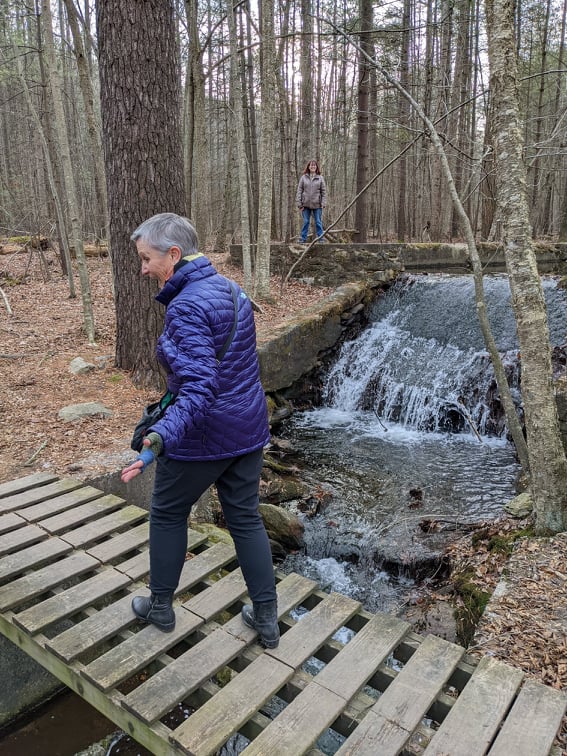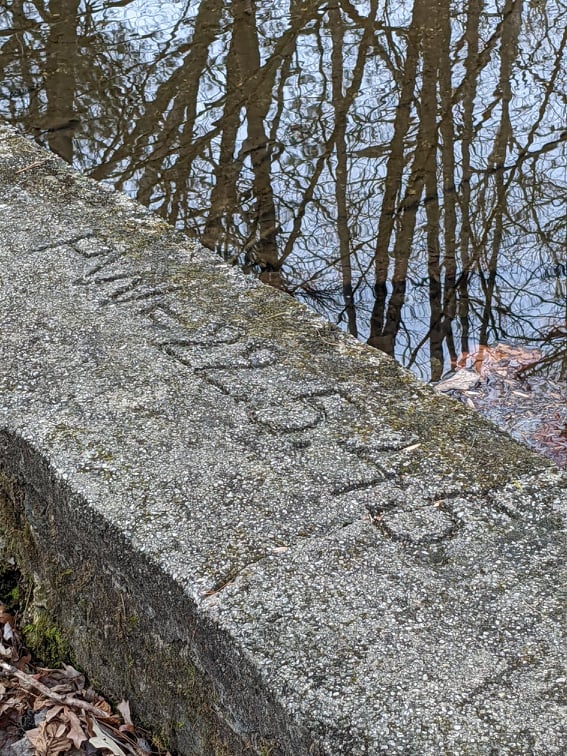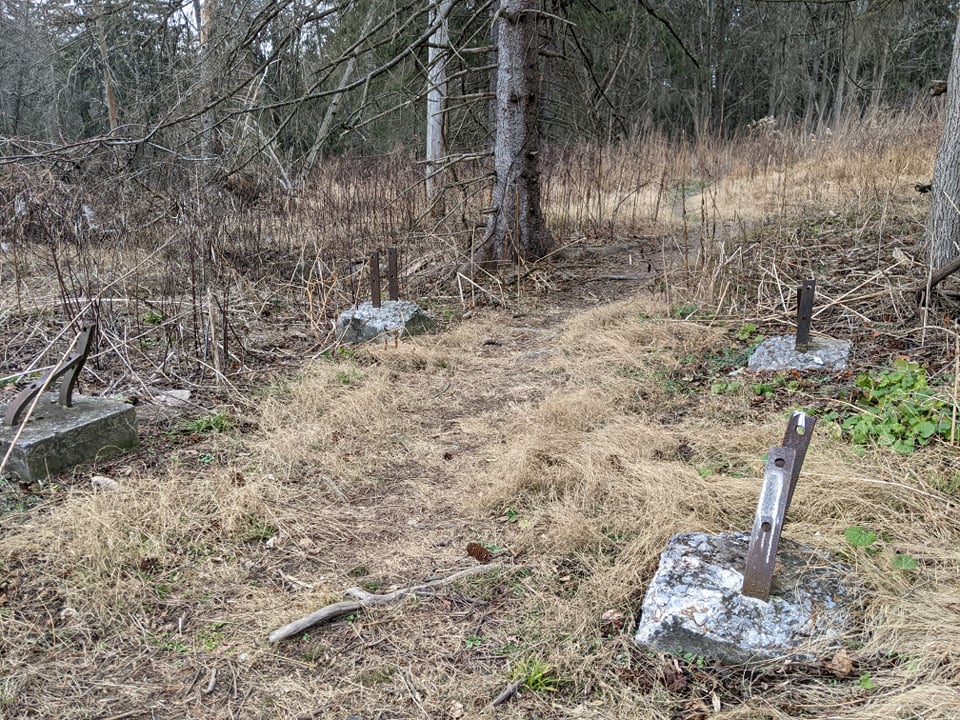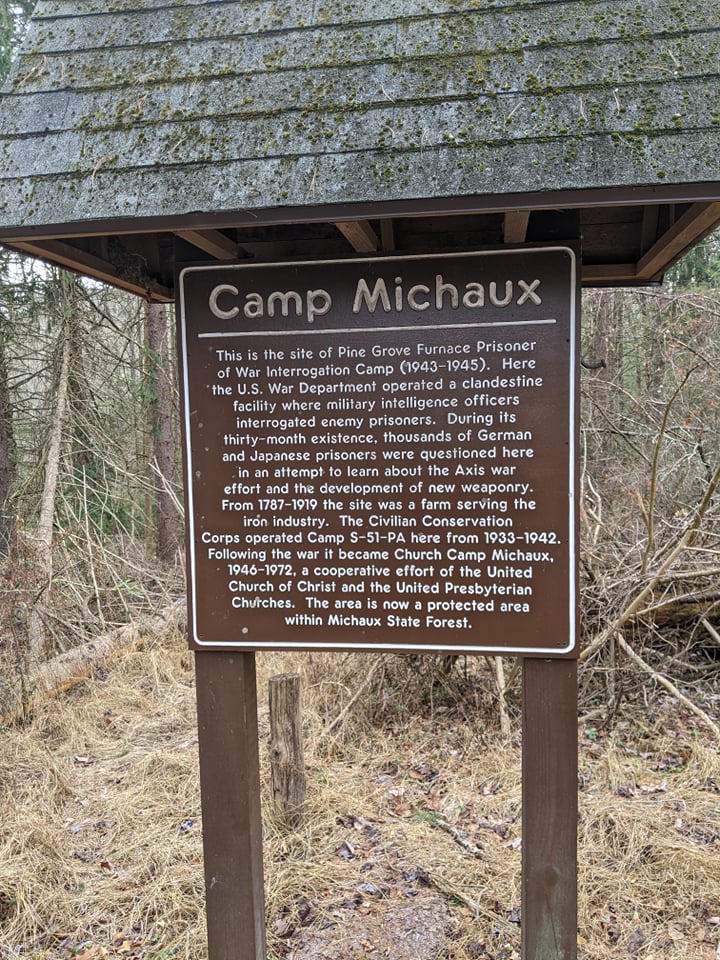Historical Background
Pine Grove Furnace POW Interrogation Camp is a perfect place to get knee deep into WW2 history in Southern Pennsylvania. Built in 1942 and remaining in operation until November 1945, it was one of over 660 internment camps set up to house enemy POWs for the duration of the war. Earlier in the war, an interrogation site was established at Ft. Hunt, Virginia about 130 miles away, but that site could not handle the volume of prisoners, so a second site was selected that involved modifying the grounds of the former Civilian Conservation Corps (CCC) camp at Pine Grove Furnace in the Michaux State Forest. Before the war’s end, more than 7,500 Germans and 161 Japanese prisoners were interrogated and housed at this facility. Yet today, one would not recognize the significance of the site, were it not for a group of dedicated local historians. More on that later.
The history of this tract of land starts around 1787 with a family farm that became known as Bunker Hill Farm. That was acquired in 1794 by an iron industry complex at Pine Grove Furnace and Laurel Forge, and the farm was used to supply food for the iron workers and animals. The iron complex had vast operations in the area until it failed in the late 1800s, and in 1913 the State of Pennsylvania ultimately purchased the entire sixty square mile estate.
The land sat idle until the Great Depression, when it was selected to become the first CCC camp on state land in Pennsylvania. In May 1933 the first CCC men arrived and began building the camp. The CCC camp remained in operation until 1942, and the workers built roads, installed telephone lines and reforested the land that had been badly depleted by a century of iron work. They also built a sizable camp, with more than 40 buildings, and functioning electricity, water and sewer systems. The CCC program was ended in early 1942 as the war-time economy pulled the U.S. out of the Great Depression.
Once it was selected to serve as a POW camp, the facility was modified significantly to include two prisoner compounds, one for officers and one for enlisted men. (Another separate compound for the Japanese prisoners was created later.) Existing CCC buildings were re-purposed to provide interrogation facilities, guard lodging, etc., and security was provided by wire fencing, guard towers and guarded entrance gates.
After November 1945 the camp again lay dormant until, in 1947-8, the United Presbyterian Church and the Evangelical and Reformed Church leased the former POW camp from the State of Pennsylvania. They operated a summer camp on the property until 1972, by which time many of the buildings were showing their age.
In 1975, the State auctioned off the surviving buildings (which were dismantled and removed) and the land was largely idle again until 2010, when the Cumberland County Historical Society partnered with the Michaux State Forest to enhance access to Camp Michaux. Since then, volunteers have improved and maintained access to the site and several editions of a walking tour booklet have been published. The latest dates from 2019 and can be easily found online by typing “Camp Michaux Self-Guided Walking Tour–Revised–2019.”
Getting Into the Field
Armed with this 36-page booklet Valerie Young, Laurie Gaulke and I decided to pay a visit to the camp. Valerie has become a poster child for Knee Deep Into History, participating in numerous tours with Markus Klauer and me. On this outing she reminded me that, when we first met for lunch in 2016, I said she would either be “bitten by the bug” or she would take one trip to the battlefields and be satisfied. Well, Valerie was in the Gettysburg area to continue the work she has been doing with the Adams County Historical Society to identify and remember WW1 soldiers from Adams County, PA. Her maternal grandfather (315th Inf. Regt., 79th Inf. Div.) was from New Oxford.
Camp Michaux is 100+ acres large and is situated in the Michaux State Forest that runs north-south approximately 15 west of Gettysburg. It is just a few miles from State Route 233 near the northern end of the forest. One can get there easily using Google Maps by typing in Camp Michaud.
Two walking tours outlined in the booklet take explorers to thirty different marker posts in the 100+ acres of the former camp. The marker posts are round wooden poles approximately four feet tall and about four inches in diameter. A number has been engraved and painted in white on the top of the post. The booklet describes the significance of what visitors see at each marker post, often using period photos to show that location’s use during one or more specific time periods in the camp’s history. The booklet also contains a war-time map, a 1946 map, an inventory of structures built and their status today (most are just foundations) and a brief history of the site during each period.


In total, we spent a little over two hours touring the camp on a mild mid-December afternoon. We were the only visitors there at that time, and I would guess this site is not often visited. (A friend, Eric “Merlin” Hanson, made me aware of the camp through his Facebook post.)
Thanks must be given to David L. Smith, Director and all the others who worked on the Camp Michaux Recognition and Development Project as part of the Cumberland County Historical Society and to those who continue to keep the trails groomed, making visitation possible! Without their work and the well-written booklet it would be difficult to see the remains and understand their significance. My only criticisim of the 2019 booklet is that it would be nice to have included GPS locations for each marker. Directions from one marker to another are sometimes a bit confusing, and it is sometimes difficult to see the marker posts. Nevertheless, their work enabled us to visit and get knee deep into a slice of WW2-era history in the United States that is often overlooked!

Postscripts:
- As a side note, Camp Michaux is very close to the Midpoint of the Appalachian Trail and nearby Toms Run Shelters. So, if you’re hiking the Trail, you might want to plan to spend some time here too.
- The booklet mentions a book titled, “Secret War at Home, the Pine Grove Furnace Prisoner of War Interrogation Camp” written by John Paul Bland and published by the Cumberland County Historical Society. This sounds like an absolutely fabulous book for further reading.
#kneedeepintohistory #meuseargonne #ww1tours #ww2tours #battlefieldtours #KDIH

I can highly second Randy’s perspectives in this article, and thank him for posting it! We really enjoyed finding the trail at this park facility – better with a few friends than by yourself! It is a great example of evolutionary land use: farm, CCC camp, POW camp, church camp, and now interpreted historical trail. Well worth the visit! Valerie Young